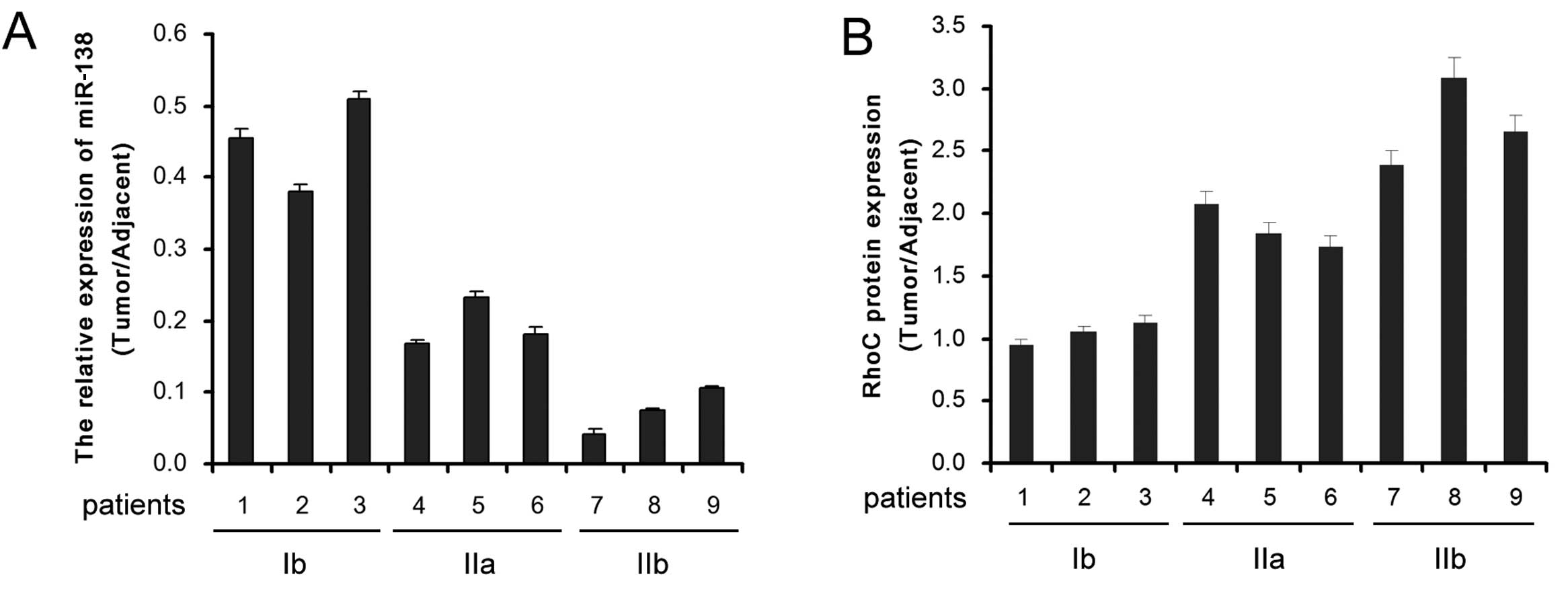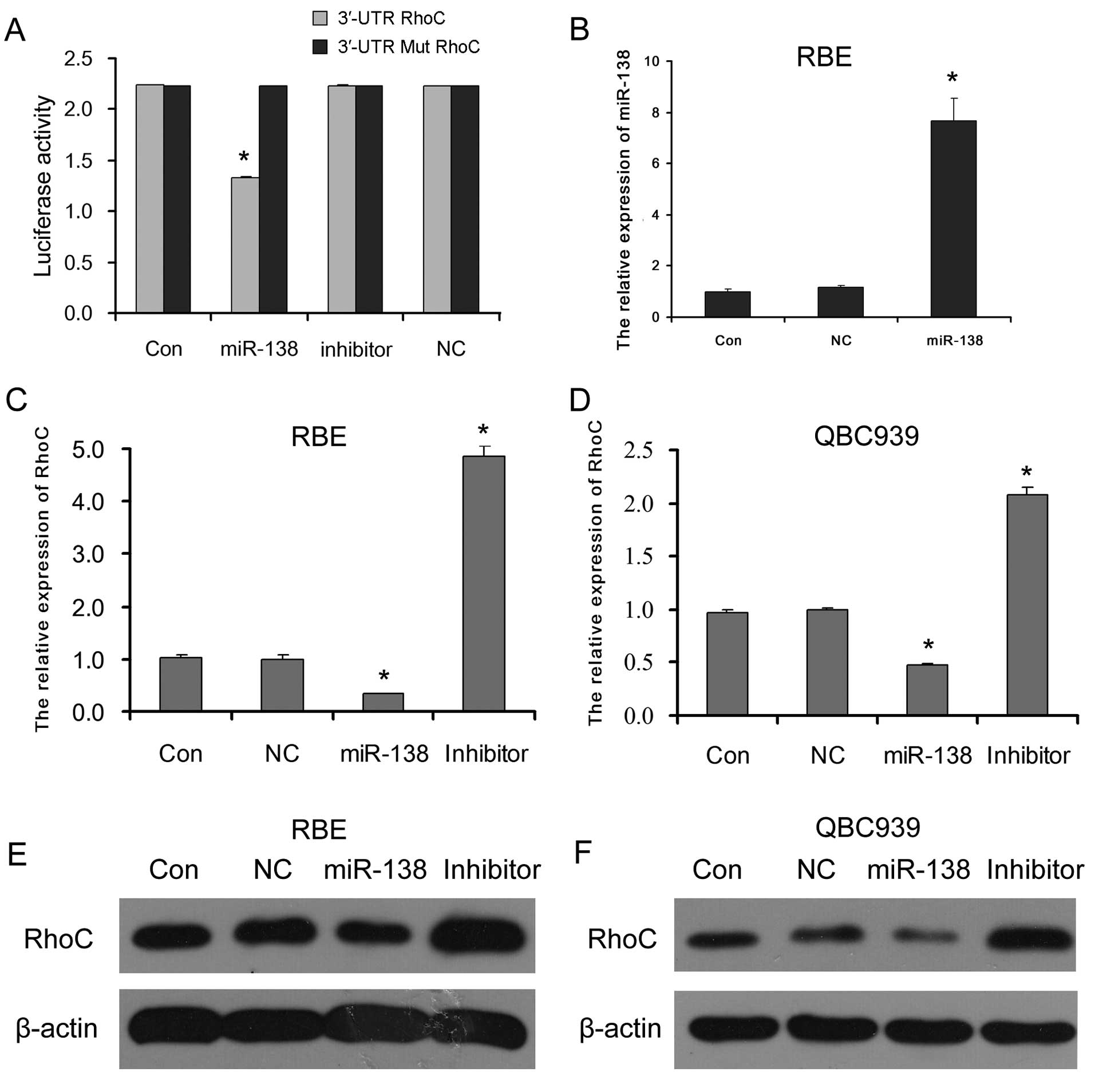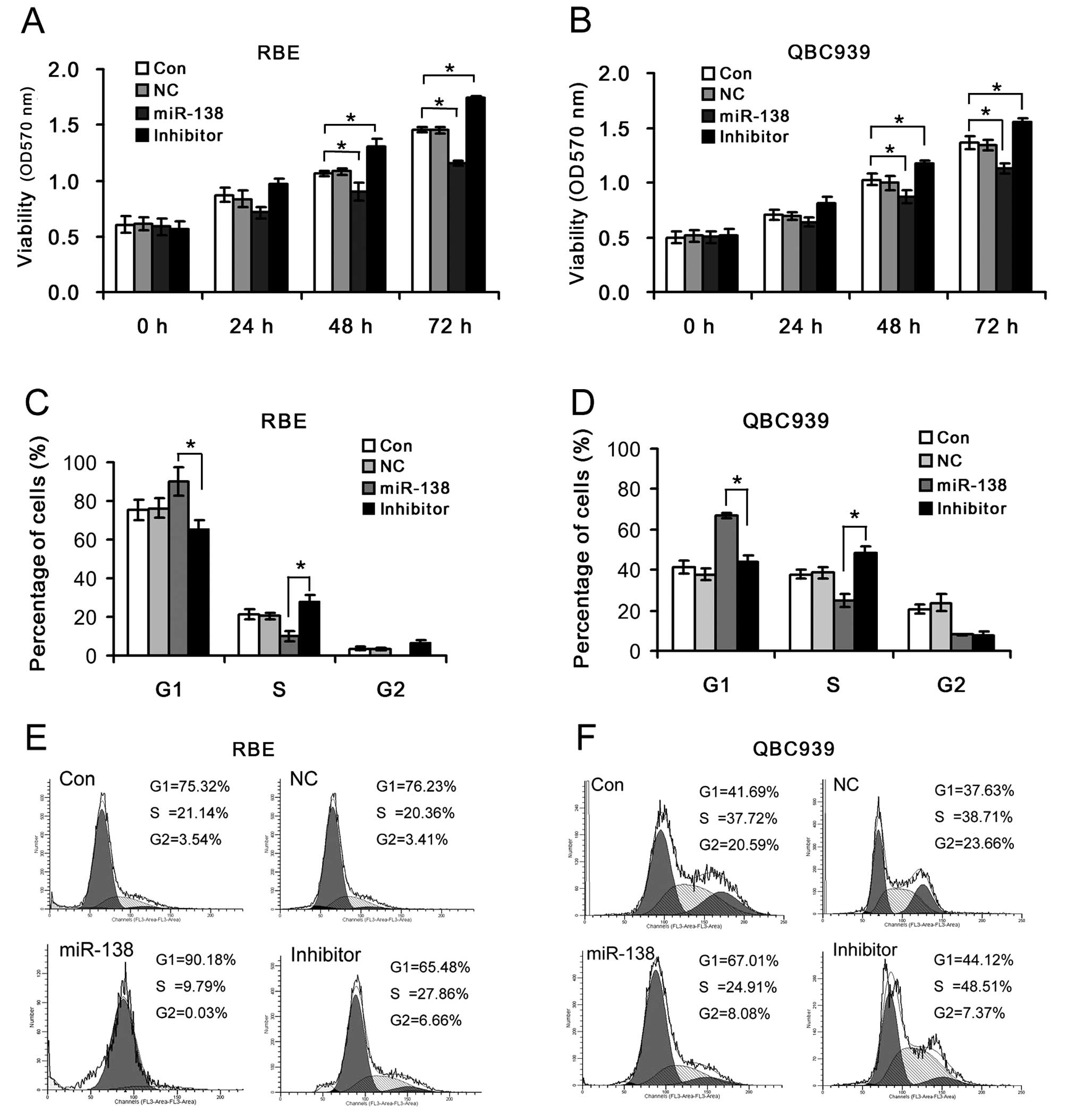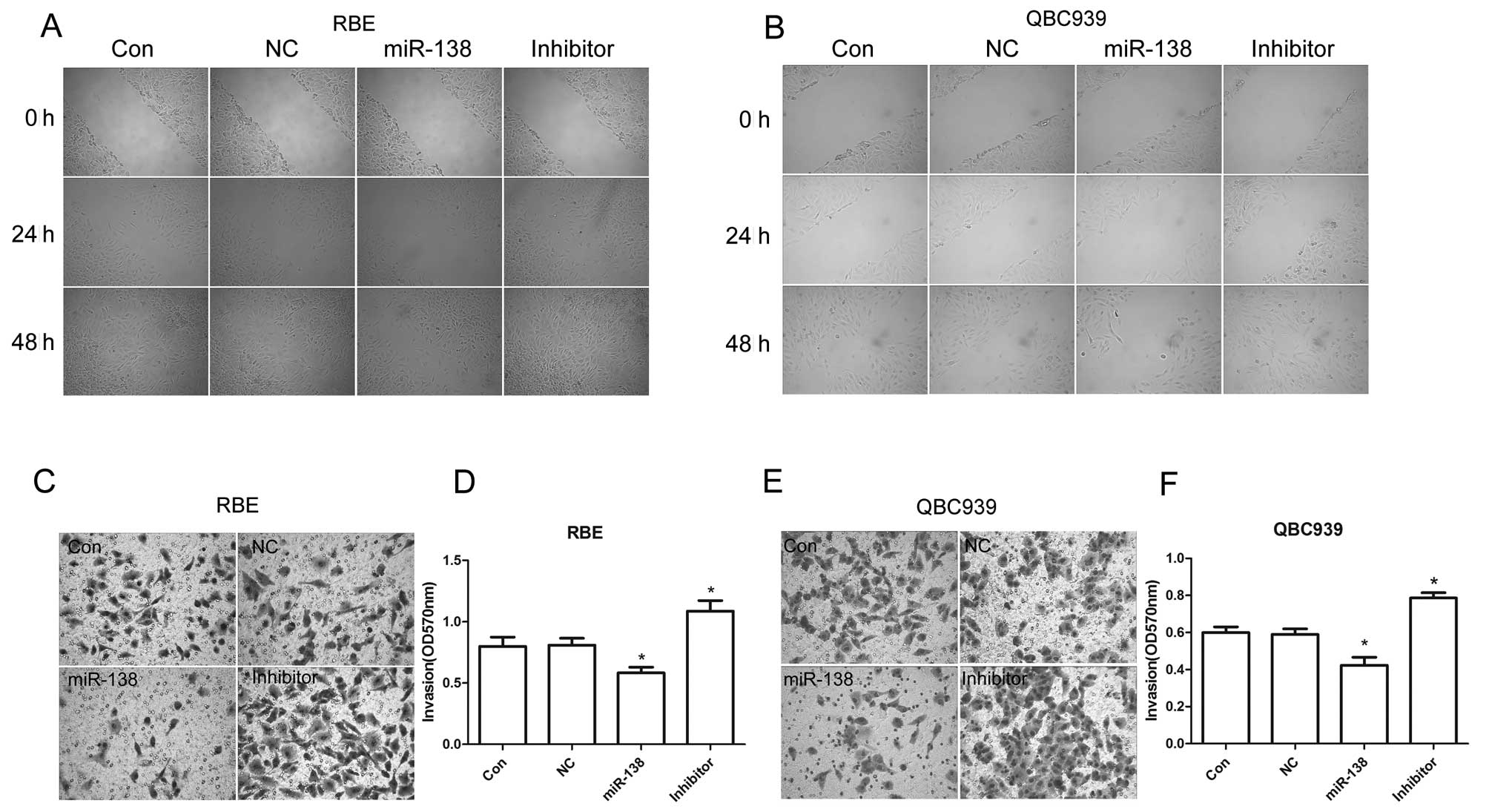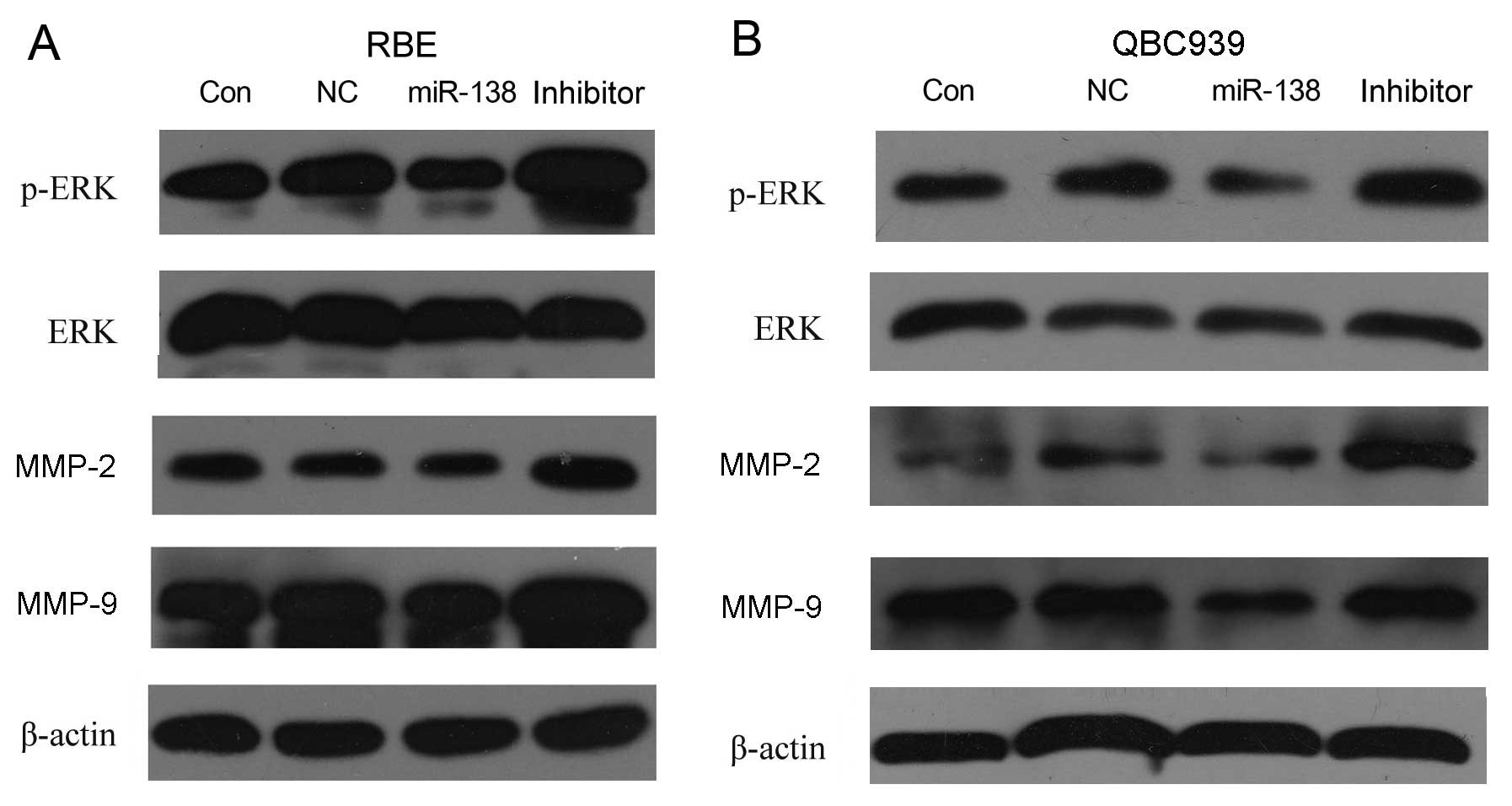|
1
|
Shimoda M and Kubota K: Multi-disciplinary
treatment for cholangiocellular carcinoma. World J Gastroenterol.
13:1500–1504. 2007. View Article : Google Scholar : PubMed/NCBI
|
|
2
|
Patel T: Cholangiocarcinoma. Nat Clin
Pract Gastroenterol Hepatol. 3:33–42. 2006. View Article : Google Scholar
|
|
3
|
Reddy SB and Patel T: Current approaches
to the diagnosis and treatment of cholangiocarcinoma. Curr
Gastroenterol Rep. 8:30–37. 2006. View Article : Google Scholar : PubMed/NCBI
|
|
4
|
Singh P and Patel T: Advances in the
diagnosis, evaluation and management of cholangiocarcinoma. Curr
Opin Gastroenterol. 22:294–299. 2006. View Article : Google Scholar
|
|
5
|
Kawahigashi Y, Mishima T, Mizuguchi Y, et
al: MicroRNA profiling of human intrahepatic cholangiocarcinoma
cell lines reveals biliary epithelial cell-specific microRNAs. J
Nippon Med Sch. 76:188–197. 2009. View Article : Google Scholar : PubMed/NCBI
|
|
6
|
Isomoto H: Epigenetic alterations
associated with cholangiocarcinoma (Review). Oncol Rep. 22:227–232.
2009.PubMed/NCBI
|
|
7
|
Chen L, Yan HX, Yang W, et al: The role of
microRNA expression pattern in human intrahepatic
cholangiocarcinoma. J Hepatol. 50:358–369. 2009. View Article : Google Scholar : PubMed/NCBI
|
|
8
|
Zhong XY, Yu JH, Zhang WG, et al:
MicroRNA-421 functions as an oncogenic miRNA in biliary tract
cancer through down-regulating farnesoid X receptor expression.
Gene. 493:44–51. 2012. View Article : Google Scholar : PubMed/NCBI
|
|
9
|
Zhang J, Han C and Wu T: MicroRNA-26a
promotes cholangiocarcinoma growth by activating β-catenin.
Gastroenterology. 143:246–256.e248. 2012.PubMed/NCBI
|
|
10
|
Yamanaka S, Campbell NR, An F, et al:
Coordinated effects of microRNA-494 induce G(2)/M arrest in human
cholangiocarcinoma. Cell Cycle. 11:2729–2738. 2012. View Article : Google Scholar : PubMed/NCBI
|
|
11
|
Razumilava N, Bronk SF, Smoot RL, et al:
miR-25 targets TNF-related apoptosis inducing ligand (TRAIL) death
receptor-4 and promotes apoptosis resistance in cholangiocarcinoma.
Hepatology. 55:465–475. 2012. View Article : Google Scholar : PubMed/NCBI
|
|
12
|
Oishi N, Kumar MR, Roessler S, et al:
Transcriptomic profiling reveals hepatic stem-like gene signatures
and interplay of miR-200c and epithelial-mesenchymal transition in
intrahepatic cholangiocarcinoma. Hepatology. 56:1792–1803. 2012.
View Article : Google Scholar
|
|
13
|
Liu CZ, Liu W, Zheng Y, et al: PTEN and
PDCD4 are bona fide targets of microRNA-21 in human
cholangiocarcinoma. Chin Med Sci J. 27:65–72. 2012.PubMed/NCBI
|
|
14
|
He Q, Cai L, Shuai L, et al: Ars2 is
overexpressed in human cholangiocarcinomas and its depletion
increases PTEN and PDCD4 by decreasing MicroRNA-21. Mol Carcinog.
Dec 28–2011.(Epub ahead of print).
|
|
15
|
Selaru FM, Olaru AV, Kan T, et al:
MicroRNA-21 is overexpressed in human cholangiocarcinoma and
regulates programmed cell death 4 and tissue inhibitor of
metalloproteinase 3. Hepatology. 49:1595–1601. 2009. View Article : Google Scholar : PubMed/NCBI
|
|
16
|
Li B, Han Q, Zhu Y, Yu Y, Wang J and Jiang
X: Down-regulation of miR-214 contributes to intrahepatic
cholangiocarcinoma metastasis by targeting Twist. FEBS J.
279:2393–2398. 2012. View Article : Google Scholar : PubMed/NCBI
|
|
17
|
Chen YJ, Luo J, Yang GY, Yang K, Wen SQ
and Zou SQ: Mutual regulation between microRNA-373 and
methyl-CpG-binding domain protein 2 in hilar cholangiocarcinoma.
World J Gastroenterol. 18:3849–3861. 2012. View Article : Google Scholar : PubMed/NCBI
|
|
18
|
Chen Y, Luo J, Tian R, Sun H and Zou S:
miR-373 negatively regulates methyl-CpG-binding domain protein 2
(MBD2) in hilar cholangiocarcinoma. Dig Dis Sci. 56:1693–1701.
2011. View Article : Google Scholar : PubMed/NCBI
|
|
19
|
Chen Y, Gao W, Luo J, Tian R, Sun H and
Zou S: Methyl-CpG binding protein MBD2 is implicated in
methylation-mediated suppression of miR-373 in hilar
cholangiocarcinoma. Oncol Rep. 25:443–451. 2011. View Article : Google Scholar : PubMed/NCBI
|
|
20
|
Olaru AV, Ghiaur G, Yamanaka S, et al:
MicroRNA down-regulated in human cholangiocarcinoma control cell
cycle through multiple targets involved in the G1/S checkpoint.
Hepatology. 54:2089–2098. 2011. View Article : Google Scholar : PubMed/NCBI
|
|
21
|
Meng F, Wehbe-Janek H, Henson R, Smith H
and Patel T: Epigenetic regulation of microRNA-370 by interleukin-6
in malignant human cholangiocytes. Oncogene. 27:378–386. 2008.
View Article : Google Scholar : PubMed/NCBI
|
|
22
|
Lee ST, Chu K, Im WS, et al: Altered
microRNA regulation in Huntington’s disease models. Exp Neurol.
227:172–179. 2011.
|
|
23
|
Jiang L, Liu X, Kolokythas A, et al:
Downregulation of the Rho GTPase signaling pathway is involved in
the microRNA-138-mediated inhibition of cell migration and invasion
in tongue squamous cell carcinoma. Int J Cancer. 127:505–512. 2010.
View Article : Google Scholar : PubMed/NCBI
|
|
24
|
Liu X, Chen Z, Yu J, Xia J and Zhou X:
MicroRNA profiling and head and neck cancer. Comp Funct Genomics.
2009:8375142009.PubMed/NCBI
|
|
25
|
Mitomo S, Maesawa C, Ogasawara S, et al:
Downregulation of miR-138 is associated with overexpression of
human telomerase reverse transcriptase protein in human anaplastic
thyroid carcinoma cell lines. Cancer Sci. 99:280–286. 2008.
View Article : Google Scholar : PubMed/NCBI
|
|
26
|
Poliseno L, Haimovic A, Segura MF, et al:
Histology-specific microRNA alterations in melanoma. J Invest
Dermatol. 132:1860–1868. 2012. View Article : Google Scholar : PubMed/NCBI
|
|
27
|
Jiang L, Dai Y, Liu X, et al:
Identification and experimental validation of G protein alpha
inhibiting activity polypeptide 2 (GNAI2) as a microRNA-138 target
in tongue squamous cell carcinoma. Hum Genet. 129:189–197. 2011.
View Article : Google Scholar : PubMed/NCBI
|
|
28
|
Wang W, Zhao LJ, Tan YX, Ren H and Qi ZT:
MiR-138 induces cell cycle arrest by targeting cyclin D3 in
hepatocellular carcinoma. Carcinogenesis. 33:1113–1120. 2012.
View Article : Google Scholar : PubMed/NCBI
|
|
29
|
Liu X, Lv XB, Wang XP, et al: MiR-138
suppressed nasopharyngeal carcinoma growth and tumorigenesis by
targeting the CCND1 oncogene. Cell Cycle. 11:2495–2506. 2012.
View Article : Google Scholar : PubMed/NCBI
|
|
30
|
Clark EA, Golub TR, Lander ES and Hynes
RO: Genomic analysis of metastasis reveals an essential role for
RhoC. Nature. 406:532–535. 2000. View
Article : Google Scholar : PubMed/NCBI
|
|
31
|
Iiizumi M, Bandyopadhyay S, Pai SK, et al:
RhoC promotes metastasis via activation of the Pyk2 pathway in
prostate cancer. Cancer Res. 68:7613–7620. 2008. View Article : Google Scholar : PubMed/NCBI
|
|
32
|
Shi Z, Chen ML, He QL and Zeng JH:
Antisense RhoC gene suppresses proliferation and invasion capacity
of human QBC939 cholangiocarcinoma cells. Hepatobiliary Pancreat
Dis Int. 6:516–520. 2007.PubMed/NCBI
|
|
33
|
Arocho A, Chen B, Ladanyi M and Pan Q:
Validation of the 2-DeltaDeltaCt calculation as an alternate method
of data analysis for quantitative PCR of BCR-ABL P210 transcripts.
Diagn Mol Pathol. 15:56–61. 2006.PubMed/NCBI
|
|
34
|
Saadoun S, Papadopoulos MC, Hara-Chikuma M
and Verkman AS: Impairment of angiogenesis and cell migration by
targeted aquaporin-1 gene disruption. Nature. 434:786–792. 2005.
View Article : Google Scholar : PubMed/NCBI
|
|
35
|
Aspenstrom P, Fransson A and Saras J: Rho
GTPases have diverse effects on the organization of the actin
filament system. Biochem J. 377:327–337. 2004. View Article : Google Scholar : PubMed/NCBI
|
|
36
|
Ravenhall C, Guida E, Harris T, Koutsoubos
V and Stewart A: The importance of ERK activity in the regulation
of cyclin D1 levels and DNA synthesis in human cultured airway
smooth muscle. Br J Pharmacol. 131:17–28. 2000. View Article : Google Scholar : PubMed/NCBI
|
|
37
|
Corona G, Deiana M, Incani A, Vauzour D,
Dessi MA and Spencer JP: Hydroxytyrosol inhibits the proliferation
of human colon adenocarcinoma cells through inhibition of ERK1/2
and cyclin D1. Mol Nutr Food Res. 53:897–903. 2009. View Article : Google Scholar : PubMed/NCBI
|
|
38
|
Ikoma T, Takahashi T, Nagano S, et al: A
definitive role of RhoC in metastasis of orthotopic lung cancer in
mice. Clin Cancer Res. 10:1192–1200. 2004. View Article : Google Scholar : PubMed/NCBI
|
|
39
|
Xue F, Takahara T, Yata Y, et al: Blockade
of Rho/Rho-associated coiled coil-forming kinase signaling can
prevent progression of hepatocellular carcinoma in matrix
metalloproteinase-dependent manner. Hepatol Res. 38:810–817. 2008.
View Article : Google Scholar
|
|
40
|
van Golen KL, Wu ZF, Qiao XT, Bao LW and
Merajver SD: RhoC GTPase, a novel transforming oncogene for human
mammary epithelial cells that partially recapitulates the
inflammatory breast cancer phenotype. Cancer Res. 60:5832–5838.
2000.
|
|
41
|
Blain EJ: Mechanical regulation of matrix
metalloproteinases. Front Biosci. 12:507–527. 2007. View Article : Google Scholar : PubMed/NCBI
|
|
42
|
Ehrenfeld P, Conejeros I, Pavicic MF, et
al: Activation of kinin B1 receptor increases the release of
metalloproteases-2 and -9 from both estrogen-sensitive and
-insensitive breast cancer cells. Cancer Lett. 301:106–118. 2011.
View Article : Google Scholar : PubMed/NCBI
|
|
43
|
Ming J, Liu N, Gu Y, Qiu X and Wang EH:
PRL-3 facilitates angiogenesis and metastasis by increasing ERK
phosphorylation and up-regulating the levels and activities of
Rho-A/C in lung cancer. Pathology. 41:118–126. 2009. View Article : Google Scholar : PubMed/NCBI
|



